Input interpretation

1, 1, 2-trichlorotrifluoroethane
Chemical names and formulas
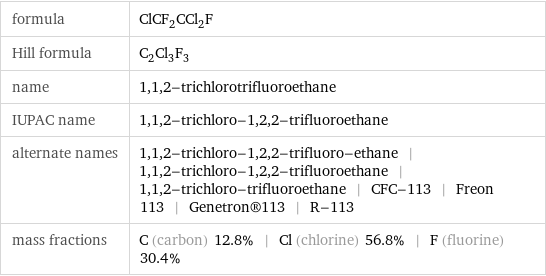
formula | ClCF_2CCl_2F Hill formula | C_2Cl_3F_3 name | 1, 1, 2-trichlorotrifluoroethane IUPAC name | 1, 1, 2-trichloro-1, 2, 2-trifluoroethane alternate names | 1, 1, 2-trichloro-1, 2, 2-trifluoro-ethane | 1, 1, 2-trichloro-1, 2, 2-trifluoroethane | 1, 1, 2-trichloro-trifluoroethane | CFC-113 | Freon 113 | Genetron®113 | R-113 mass fractions | C (carbon) 12.8% | Cl (chlorine) 56.8% | F (fluorine) 30.4%
Lewis structure
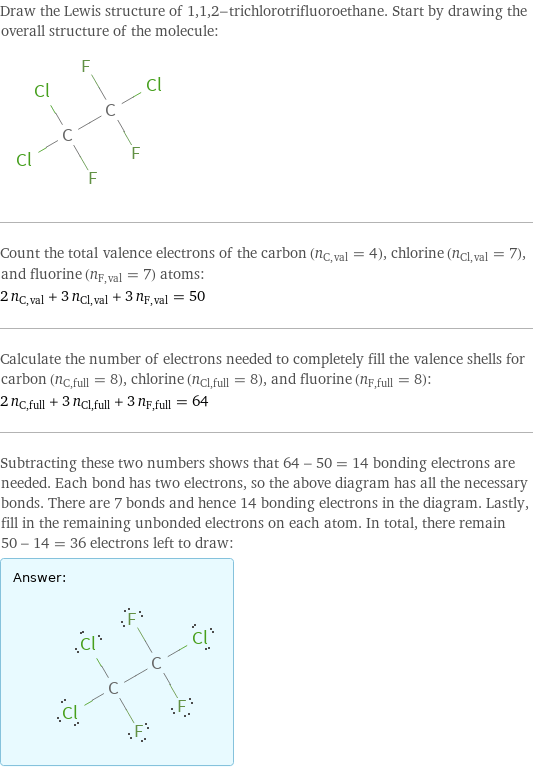
Draw the Lewis structure of 1, 1, 2-trichlorotrifluoroethane. Start by drawing the overall structure of the molecule: Count the total valence electrons of the carbon (n_C, val = 4), chlorine (n_Cl, val = 7), and fluorine (n_F, val = 7) atoms: 2 n_C, val + 3 n_Cl, val + 3 n_F, val = 50 Calculate the number of electrons needed to completely fill the valence shells for carbon (n_C, full = 8), chlorine (n_Cl, full = 8), and fluorine (n_F, full = 8): 2 n_C, full + 3 n_Cl, full + 3 n_F, full = 64 Subtracting these two numbers shows that 64 - 50 = 14 bonding electrons are needed. Each bond has two electrons, so the above diagram has all the necessary bonds. There are 7 bonds and hence 14 bonding electrons in the diagram. Lastly, fill in the remaining unbonded electrons on each atom. In total, there remain 50 - 14 = 36 electrons left to draw: Answer: | |
3D structure

3D structure
Basic properties
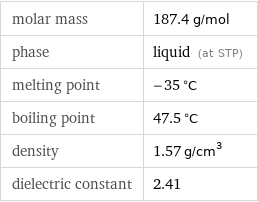
molar mass | 187.4 g/mol phase | liquid (at STP) melting point | -35 °C boiling point | 47.5 °C density | 1.57 g/cm^3 dielectric constant | 2.41
Liquid properties (at STP)
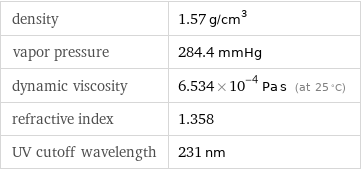
density | 1.57 g/cm^3 vapor pressure | 284.4 mmHg dynamic viscosity | 6.534×10^-4 Pa s (at 25 °C) refractive index | 1.358 UV cutoff wavelength | 231 nm
Units

Thermodynamic properties

specific heat capacity c_p | liquid | 0.9078 J/(g K) molar heat capacity c_p | liquid | 170.1 J/(mol K) specific heat of formation Δ_fH° | gas | -3.826 kJ/g molar heat of formation Δ_fH° | gas | -716.8 kJ/mol molar heat of vaporization | 26.4 kJ/mol | specific heat of vaporization | 0.1409 kJ/g | molar heat of fusion | 2.47 kJ/mol | specific heat of fusion | 0.0132 kJ/g | (at STP)
Phase diagram
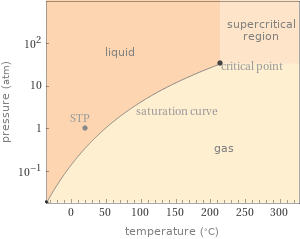
Phase diagram
Units

Chemical identifiers
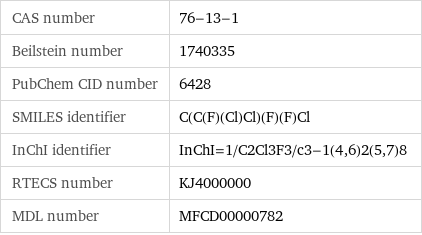
CAS number | 76-13-1 Beilstein number | 1740335 PubChem CID number | 6428 SMILES identifier | C(C(F)(Cl)Cl)(F)(F)Cl InChI identifier | InChI=1/C2Cl3F3/c3-1(4, 6)2(5, 7)8 RTECS number | KJ4000000 MDL number | MFCD00000782
Toxicity properties

odor | carbon tetrachloride-like odor threshold | 45 ppm threshold limit value | 1000 ppmv
Units
